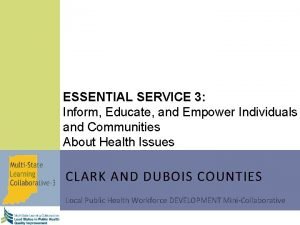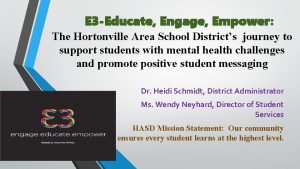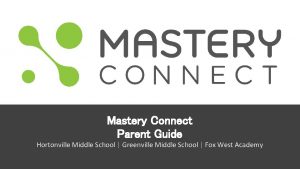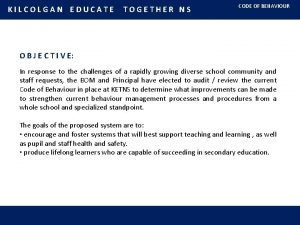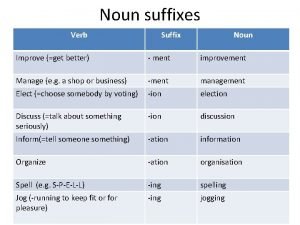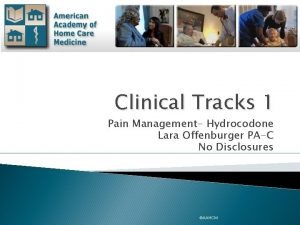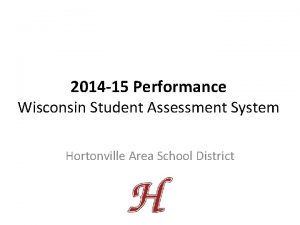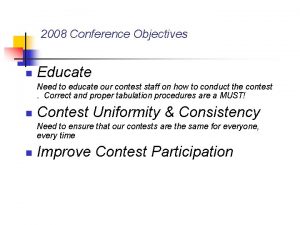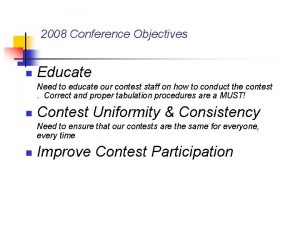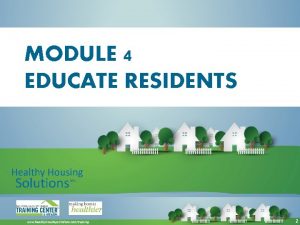E 3 Educate Engage Empower The Hortonville Area























- Slides: 23

E 3 -Educate, Engage, Empower: The Hortonville Area School District’s journey to support students with mental health challenges and promote positive student messaging Dr. Heidi Schmidt, District Administrator Ms. Wendy Neyhard, Director of Student Services HASD Mission Statement: Our community ensures every student learns at the highest level.

Where is Hortonville? • 3800 students • 6 buildings (3 elementary schools, 2 middle schools, 1 high school) • 280 professional staff/250 support staff • 13% students with disabilities • 20% free/reduced • 93% Caucasian

Quick History of Hortonville • • • Hortonville is a village in Outagamie County, Wisconsin, United States in the Fox Valley. The population was 2, 711 at the 2010 census. Village of Hortonville and Town of Greenville-growing area. School district student increase of 150 students this year. The village was founded in 1848 by landowner Alonzo Horton, who created the 75 -acre Black Otter Lake. He later developed the city of San Diego, California. Hortonville had one of the first match light factories in the world.

Let us tell you our story…………. . • District recognized as model PLC district (first district in the state to receive this recognition) • Teachers have identified and aligned their power standards, learning targets, and are continuing to collaborate in teams on common formative assessments • Data is used for targeted interventions with all buildings having an intervention time/SIT team • • • Our teachers have done a great job on the academic side of student learning! • The district addressed physical safety needs. HASD Strategic Plan has a focus area on Safety-Physical and Emotional Safety Referendum $$ helped with main entrance check in at each building, Raptor program, additional surveillance cameras, two way radios, and updated crisis response manual, TECIP training and building teams

Students need to feel emotionally safe at school to learn at the highest level.

What did the data tell Hortonville? (YRBS, 2015) • 23% of students reported feeling sad or hopeless almost every day for two weeks or more in a row and that they stopped doing some usual activities • 12. 8% of students reported having seriously considered attempting suicide in the last 12 months • 11. 1% of students reported having a plan about how they would attempt suicide in the last 12 months • 11. 8% of students reported having attempted suicide at least once in the last 12 months Our district has also experienced student tragedy

What else did the data tell Hortonville? (YRBS, 2015) • Do you agree or disagree that your family loves you and gives you help and support when you need it? – 89% agree. • Do you agree or disagree that teachers really care about you and give you a lot of encouragement? – 92. 2% agree. • Do you agree or disagree that you feel like you belong at this school? – 68% agree. • Is there at least one teacher or other adult in this school that you can talk to if you have a problem? – 65. 6% agree.

Additional Data: DPI’s AODA Prevention Program Assessment Tool • Assessment completed with Pupil Services Team and District Administrative Team • Results identified strengths and gaps in programming A. School Environment B. Curriculum and Instruction C. Student Programs D. Pupil Services E. Adult Programs F. Family/Community

What resources/programs existed before E 3? • PBIS in each building • Extended learning time at each building for interventions (re-teach) • Collaborative PLC time at each building • Student intervention teams (SIT) meet weekly • Health curriculum-suicide awareness (middle/high school) • United Way PATH counselor 2 days a week for mental health • Pre Action activities/$$ from Outagamie County • K-12 counselors /School psychologists

Our journey began two years ago…. . • What can we do different or better to help our students, parents and staff? • Break down the barriers for mental illness, allow all students access to services, screen all students, positive messaging and support to students for resiliency/grit/perseverance, provide educational training for our staff and support for parents • What was our vision? • Comprehensive, collaborative K-12 program to address mental health challenges and promote mental wellness • Prevention/education (student resiliency, parents, and staff) • Identification (screening, goal is K-12) • Intervention (on site therapy)




3 Tier Model • On-site individual counseling • Group therapy • Family counseling • Case management Tier 3 Diagnosis & Treatment Tier 2 Early Intervention and Identification • Teen support group • Consultation to teachers and staff • Classroom shadowing • Social/education groups • 2 nd step K-8 curriculum • On-site universal screening (2016 -17— 5 th-12 th grade) • Case management Tier 1 Universal Prevention for Students, Parents, Staff, Community Education and Engagement • QPR (Question, Persuade, Refer)-all staff trained • Student Assistance Program training/Core facilitation training • Youth Mental Health First Aid staff training • NAMI staff training: Mental Health 101 and Recovery 101 • Ending the Silence and Breaking the Silence • Awareness campaign/events • Staff book study • Parent education


Staff learning • 2600 staff, parent and student surveys to get baseline data on attitudes/perceptions regarding mental health. • QPR (Question, Persuade, Refer) suicide awareness training (350 staff, including teachers and bus drivers) • Youth Mental Health First Aid training (40 staff trained) • Student Assistance Program and Core Facilitation Training (30 staff trained) • Book study The Teacher’s Guide to Student Mental Health by William Dinkel (20 staff with brochure on seven mental health disorders as a product) • Fostering the Resilient Learner 2016 -17 book study • NAMI staff training: Mental Health 101 and Recovery 101 (250 staff) • Ending the Silence and Breaking the Silence NAMI classroom presentation (550 -10 th grade students and 8 th grade students)

Engaging and Educating Our Students • • • K-12 PBIS K-8 Implementation of Second Step (Skills for Social and Academic Success) 9 -12 Began Sources of Strength journey (SAMHSA’s National Registry of Evidencebased Programs and Practices) Student Quotes re: Sources of Strength influence “I feel that Sources of Strength positively impacts me and my peers. Because I am Sources of Strength trained, it has helped me to understand how to be a trusted friend and help my friends and peers when they need support. I feel like I can remind them of different sources when they face challenges. I also have a better understanding of my own sources and how they can help me related to my own mental health and life in and out of school. ” - Sophomore female • “Sources of Strength helps me to be able to communicate better with my peers about their mental health and possibly make them feel better about getting help if they are struggling. ” – Sophomore male •

2015 -2016: 1 st year implementation data • 160 students in the district have received therapy on site • Parents don’t have to take off work, drive to get their child, attend a therapy appointment and then drive the child back to school. • E 3 hotline-Parents can call anytime to set up an appointment for their child. • There were 1340 mental health therapist/student sessions. • Students in every building are receiving therapy services. • Each school in the Hortonville Area School District is licensed as a mental health clinic. • All students at Hortonville High School and 8 th grade students in both middle schools were screened. • NAMI teen support group has increasing membership • Cost per student approximately $77. 00

Other Outcomes • 63% of 8 -12 th grade students screened for anxiety, depression, suicide ideation, suicide attempt and AODA issues • 16% of these students were referred for additional services • 13% decrease in missing school days of E 3 provider referred students • 61% decrease in disciplinary actions of E 3 provider referred students • 71% of E 3 patients “significantly or somewhat improved”

Funding (4 year commitment) • Approximately $77. 00 per students 8 -12 th grade • Insurance billing/MA • Community Foundation and other grants • HASD annual amount ($50, 000 -$65, 000 -$90, 000 -$120, 000) • Partner in-kind donations

Goals for 2016 -17 • Screen all 5 th-12 th grade students (5 th grade with a different screener/process) • Revise therapist times at each building based on their building’s need from year 1 • Staff training: ACEs (Adverse Childhood Experiences) presentation and strategies • Involve therapist at building SIT teams • Continue parent education/involvement

Mental health disorders in children and adolescents are real, they can be identified, correctly diagnosed, and successfully treated, and teachers play a major role in ensuring the success of students who have these disorders. William Dikel, author of THE TEACHER’S GUIDE TO STUDENT MENTAL HEALTH

Thank you for allowing us to tell our story as we journey to mental wellness!
 Educate empower evolve
Educate empower evolve Essential services
Essential services Hortonville school district
Hortonville school district Masteryconnect parent login
Masteryconnect parent login Educate
Educate Ketns
Ketns Belmayne educate together
Belmayne educate together Educate women
Educate women Past particple of drink
Past particple of drink It takes the whole village to educate a child
It takes the whole village to educate a child Educate adj
Educate adj Educate your desires
Educate your desires It takes a whole village to educate a child
It takes a whole village to educate a child Fall v3 hali
Fall v3 hali Aws educate vocareum
Aws educate vocareum Noun suffixes improve
Noun suffixes improve Educate fortox
Educate fortox Yonatan shemmer
Yonatan shemmer Digital india power to empower
Digital india power to empower Our mission is to empower
Our mission is to empower Microsoft vision statement
Microsoft vision statement Inspire vs empower
Inspire vs empower Empower custom fields validation
Empower custom fields validation Empower users
Empower users

